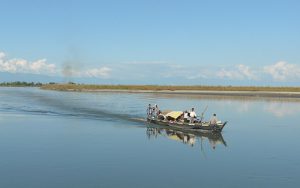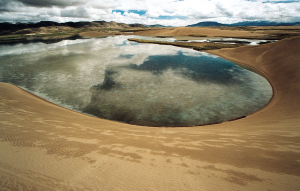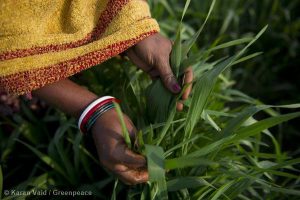India’s Prime Minister Narendra Modi has reportedly given the green light to construction of the 3,000 megawatt Dibang hydropower project in the ecologically fragile region of Arunachal Pradesh, north-east India.
The proposed dam on the Dibang River, a major tributary of the Brahmaputra close to the border with China, will be India’s largest and one of the world’s tallest dams.
The Forest Advisory Committee of India’s Ministry of Environment and Forests cleared the dam last week, subject to a reduction in the dam height by 20 metres from the originally envisaged 288 metres.
The committee has refused environmental clearances for the project twice before on the grounds it would destroy forests and impact the Dibru-Saikhowa National Park downstream in Assam state.
The National Hydroelectric Power Corporation (NHPC) –the company behind the dam – submitted several revised proposals to the ministry, reducing the amount of forest cleared and the height of the dam structure. But on August 28 the Forest Advisory Committee rejected the latest proposal to submerge more than 45 square kilometres of forest land for the project.
The committee concluded the “ecological and social costs of destroying a vast tract of forest land which is a major source of livelihood for the state’s tribal population would far outweigh the benefit likely to accrue from the project.”
However, days later the Prime Minister’s principal secretary sent a letter to the environment secretary on September 3 to "clear the project expeditiously" as per the decision of the Cabinet Committee on investment.
In its pre-election campaign Modi’s Bharatiya Janata Party promised not to go ahead with mega dams and people supported the party enthusiastically.
The Krishak Mukti Sangram Samittee (KMSS) – a farmers’ organisation spearheading the anti-dam movement in Assam – is now accusing the prime minister of being a traitor. Others organisations agitating against mega dams are also threatening to protest against the 16,000 crores (US$2.6 million) Dibang project. Most of the power produced will be exported to help ease power shortages elsewhere in India.
Opening the floodgates
The central government has decided to build the project without any public consultation or study of the potential impacts in downstream Assam state. Anti-dam activists are now concerned Modi’s government will now push ahead with a series of mega dams planned in the northeast region, ignoring all expert and advisory committees in an attempt to harness “green” hydropower.
The Dibang is just one of 168 massive dams slated to produce 57,000 megawatts of hydropower in Assam and Arunachal Pradesh states. This strategically important region, which borders Myanmar in the east, Bhutan in the west and China in the north, is described by politicians as India’s ‘future powerhouse’ and is a key focus point of the country’s dam building programme.
China is involved in a major dam building programme on its side of the border, also using the waters of the Brahmaputra – which it calls the Yarlung Tsangpo. China’s plans to build a massive dam three times the size of the Three Gorges Dam on the Great Bend before the river swings round into India.
The Brahmaputra is one of the world’s major rivers, winding across the Tibetan Plateau through China, India and Bangladesh before joining with the Ganga and flowing out into the Bay of Bengal.
The dam building programme in north-east India has been highly controversial. Opponents say it not only ignores geological and ecological factors – it also fails to take into account the impact of climate change in the region.
Experts also say no proper overall plan has been put in place: though India and China have signed a limited agreement to data on river flow, there is no specific deal on managing the Brahmaputra’s waters.
Protests about the dams have been growing, with work on the 2,000 megawatt Lower Subansiri dam on one of the Brahmaputra’s tributaries – repeatedly held up.
Broken promises
In the build up to this year’s elections, Narendra Modi held a rally in Pasighat in the East Siang district of Arunachal Pradesh in February where he acknowledged peoples’ concerns about large dams and committed to developing small hydropower instead.
“I know citizens of the region are against large power projects,” he said. “I respect your sentiment. But hydropower can also be harnessed using smaller projects, while protecting the environment.”







